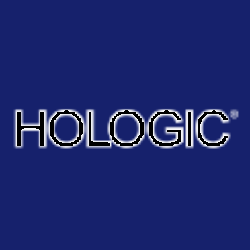Hologic demonstrates a strong business model with significant competitive advantages in diagnostics and a solid financial foundation. However, challenges in the Breast Health segment and external economic uncertainties pose risks to growth. Future prospects remain positive due to innovation and international expansion.
Analysis Date: February 5, 2025
Last Updated: March 12, 2025
Trailing Twelve Months (TTM) values provide a view of the company's performance over the last year.
Graham Value Metrics
Benjamin Graham's value investing approach focuses on finding stocks with a significant margin of safety between their intrinsic value and market price.
Intrinsic Value
Estimated fair value based on Graham's formula
$40.38
Current Market Price: $59.30
IV/P Ratio: 0.68x (>1.0 indicates undervalued)
Margin of Safety
Gap between intrinsic value and market price
-47.0%
Graham recommended a minimum of 20-30% margin of safety
Higher values indicate a greater potential discount to fair value
ROE: 15.107672626481069
ROA: 2.3027484046879834
Gross Profit Margin: 56.176186585456435
Net Profit Margin: 18.42085716407933
Trailing Twelve Months (TTM) values provide a view of the company's performance over the last year.
Strong Gross Profit Margin
56.18
Gross Profit Margin
The gross profit margin of 56.18% indicates that the company is effective in managing its production costs relative to its revenues.
Healthy Net Profit Margin
A net profit margin of 18.42% reflects strong overall profitability, suggesting that the company retains a significant portion of its revenue as profit.
Moderate Operating Profit Margin
23.94
Operating Profit Margin
The operating profit margin of 23.94% is decent but could be improved, indicating that operational efficiency may be an area for enhancement.
About Profitability Metrics
Profitability metrics measure a company's ability to generate earnings relative to its revenue, operating costs, and other relevant metrics. Higher values generally indicate better performance.
Return on Equity (ROE)
Measures how efficiently a company uses its equity to generate profits
15.11%
10%
15%
Higher values indicate better returns for shareholders
TTM (as of 2025-04-16)
Return on Assets (ROA)
Measures how efficiently a company uses its assets to generate profits
2.30%
3%
7%
Higher values indicate better asset utilization
TTM (as of 2025-04-16)
Gross Profit Margin
Percentage of revenue retained after accounting for cost of goods sold
56.18%
20%
40%
Higher values indicate better efficiency in production
TTM (as of 2025-04-16)
Net Profit Margin
Percentage of revenue retained after accounting for all expenses
18.42%
8%
15%
Higher values indicate better overall profitability
TTM (as of 2025-04-16)
Extremely Low Debt Levels
0.01
Debt-to-Equity Ratio
0.005
Debt-to-Assets Ratio
With a debt-to-equity ratio of 0.01 and a debt-to-assets ratio of 0.005, HOLX shows outstanding financial health with negligible debt, reducing financial risk.
Strong Liquidity Ratios
The current ratio of 3.49 and quick ratio of 2.78 indicate that the company has more than enough short-term assets to cover its liabilities, showcasing solid liquidity.
No financial health weaknesses identified.
About Financial Health Metrics
Financial health metrics assess a company's ability to meet its financial obligations and its overall financial stability.
Debt to Equity Ratio
Total debt divided by total equity
0.01x
1.0x
2.0x
Lower values indicate less financial leverage and risk
Less than 1.0 is conservative, 1.0-2.0 is moderate, >2.0 indicates high risk
Q1 2025
Current Ratio
Current assets divided by current liabilities
3.49x
1.0x
2.0x
Higher values indicate better short-term liquidity
Less than 1.0 is concerning, 1.0-2.0 is adequate, greater than 2.0 is good
Q1 2025


